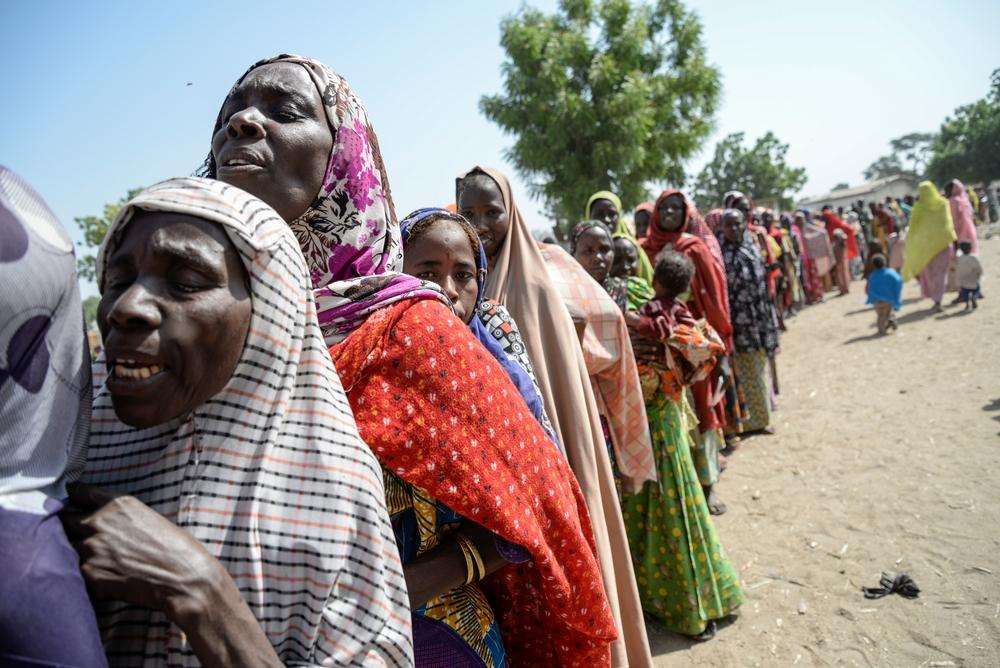This article was originally published in the Lancet Global Health Blog, January 6, 2017.
Author: Kerstin Hanson
Kerstin Hanson is an internal medicine and pediatrics physician who specializes in childhood malnutrition. She serves as the Nutrition and Pediatrics Technical Advisor for MSF in Paris.
Crises with alarming levels of malnutrition-related child mortality are complicated contexts, given that the world’s most critically malnourished also often face conflict, displacement, and even famine. This has been the case in northern Nigeria’s Borno State, where Medécins Sans Frontières (MSF) has been responding to an unprecedented food crisis related to conflict between the Nigerian armed forces and the militant group Boko Haram. In Borno, well-established international malnutrition protocols may be ill-suited to realities on the ground. In extreme conditions such as these, how can organizations adapt established protocols to develop context-specific strategies and prevent malnutrition-related deaths?
Since 2015, MSF has opened both inpatient and ambulatory therapeutic feeding centres in the state capital, Maiduguri, and in towns and displaced person camps in surrounding areas. An influx of displaced persons has almost doubled the population of Maiduguri, now estimated to be nearly 2.5 million people, and entire rural villages have relocated to towns and camps around the state. In 2016, nutritional screenings in Borno revealed acute malnutrition levels of up to 50% among <5-year-olds, along with catastrophic child mortality rates, in some places as high as four times emergency thresholds.
Given the immense needs and complex environment—a vast population, few humanitarian actors, limited resources, and many extremely insecure or inaccessible areas—we at MSF have had to simplify our approach by deviating from certain elements of established community management of acute malnutrition (CMAM) protocols. These strategies build on prior experience from other countries, but have never been used in such a large-scale emergency. For instance, we screen for malnutrition by measuring children’s mid-upper-arm circumference (MUAC) using colour-coded paper bracelets, but eliminate weight-for-height Z-score calculations (the complex classification system used in international guidelines). These MUAC measurements alone (along with the presence of bilateral oedema) are used during outpatient consultations, for admission to and discharge from inpatient therapeutic feeding centres, and for following progress during treatment. In Borno we see many advantages to this approach. It allows us to screen and treat more children faster, and to better identify those most at risk of death. MUAC measurements are also simple enough to be used at a village level by community health workers, and MSF emergency teams can easily combine MUAC screenings with other interventions such as measles vaccination campaigns or food and bednet distributions.
Another adaptation in Borno has been to expand the admission criteria for our therapeutic feeding programmes to identify and treat patients before malnutrition becomes life-threatening. Traditional CMAM programs treat moderate acute malnutrition and severe acute malnutrition separately, requiring distinct patient flows that demand double the human resources, structures, and supplies. But in extremely resource-limited settings, treatment of more dangerous severe acute malnutrition is prioritized—with the unintended consequence that treatment of moderate acute malnutrition may be neglected. Our Borno teams avoid this by managing both categories of patient together, replacing the somewhat arbitrary standard diagnostic cut-off between moderate and severe cases with a “sliding scale” that adjusts MUAC admission criteria to an evolving context. Factors such as food security, overall levels of malnutrition, mortality and co-morbidity rates, and the local presence of other humanitarian actors and resources all help determine which children to include in treatment. As the context stabilizes and more resources become available to meet the needs, these criteria can be returned to traditional benchmarks.
Further, to increase overall access to treatment while still prioritizing the most vulnerable, all acutely malnourished children receive the same therapeutic food, but in doses adjusted to their severity. Giving children with moderate acute malnutrition half doses prevents their condition from deteriorating and, since they are often also immunocompromised, helps them fight infectious disease.
Finally, in the most dangerous and remote areas of Borno, we use a “one-shot” strategy (so-called because our team may only have one chance to reach a site or group of people). We have used “one-shot” teams in places such as in Bama, a town on the frontline of the conflict between the Nigerian army and Boko Haram, and continue to do so in other locations in the state. These teams can typically stay for only a few days, and do as much as possible while there to reduce morbidity and mortality. This includes MUAC screening, outpatient consultations, vaccination, seasonal malaria chemoprophylaxis, and distribution of both food and non-food items such as soap, blankets, and mosquito nets. Like the teams within Maiduguri, “one-shot” teams encounter huge malnutrition burdens and also diverge from established CMAM protocols. Under intense time constraints, they rapidly identify acutely malnourished children with MUAC and then give caregivers up to a 1-month supply of ready-to-use therapeutic food, plus instructions for its use and for monitoring their child. We also target standard food rations to these families, as well as to pregnant and lactating mothers. While providing more than the standard 1- to 2-week dose of ready-to-use therapeutic food may increase the possibility of some diversion or misuse, the alternative of not leaving therapeutic food behind would almost assure that these children deteriorate, and many would die.
These adaptations are not perfect. Some of these adjustments lack the solid evidence base that underpin traditional CMAM approaches, and monitoring is difficult with highly mobile populations and longer follow-up periods. To address these challenges, we are improving community surveillance models and increasing our overall data collection and analysis, continuing to adapt, improve, and learn as the crisis unfolds. Yet we also believe that flexibility is needed when lives are on the line. When working in some of the most acute emergencies, context-specific interventions allow us to intervene more effectively.




